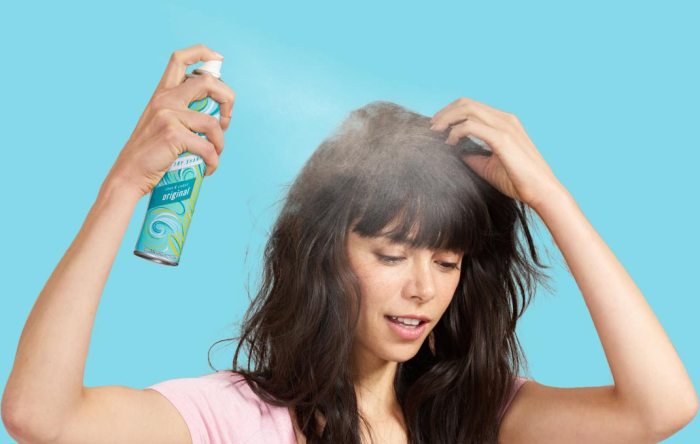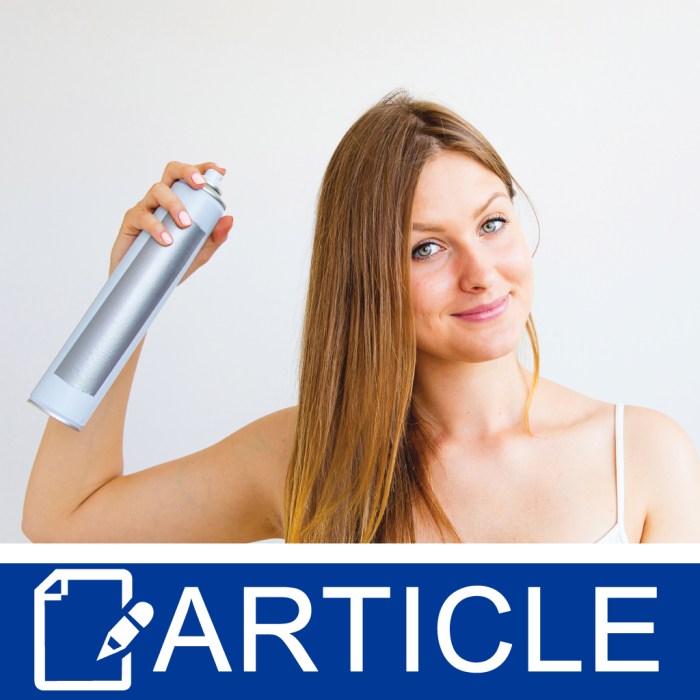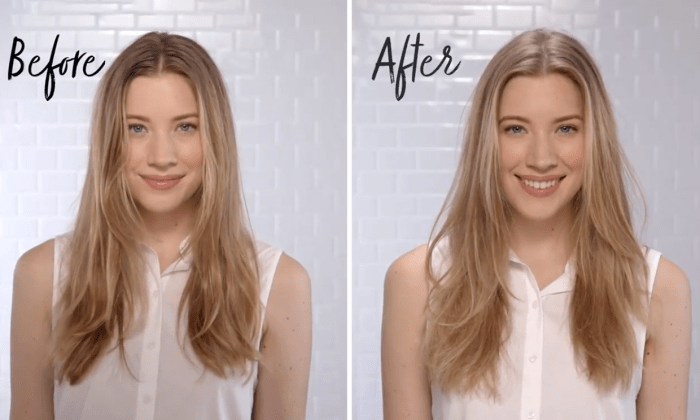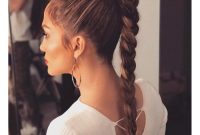In the world of hair care, dry shampoo has emerged as a revolutionary product, transforming the way we maintain our hairstyles between washes. This innovative solution offers a quick and convenient way to refresh and revitalize hair without the need for water.
As we delve into the world of dry shampoo, we’ll explore its history, types, benefits, and the science behind its remarkable cleansing action. Discover how this remarkable product can help you achieve beautiful, healthy hair, all while saving time and effort.
From its humble beginnings to its modern-day popularity, dry shampoo has undergone a fascinating evolution. Initially used as a hair care staple by soldiers and travelers, it has now become an indispensable tool for busy individuals seeking a quick hair refresh.
With various types available, including powder, aerosol, and foam, dry shampoo caters to diverse hair types and needs, making it a versatile addition to any hair care routine.
Dry Shampoo: An Overview

Dry shampoo, a versatile hair care product, offers a quick and convenient way to refresh hair without the need for traditional washing.
With a history dating back to the 18th century, dry shampoo has evolved significantly. Initially made from starch, it now comes in various forms, including powders, sprays, and foams, each catering to different hair types and needs.
Types of Dry Shampoos
The diverse range of dry shampoos available allows for personalized hair care solutions:
- Powder Dry Shampoos: These classic dry shampoos absorb excess oil and add volume, making them ideal for oily hair.
- Spray Dry Shampoos: Convenient and easy to apply, spray dry shampoos provide a quick refresh and are suitable for all hair types.
- Foam Dry Shampoos: With a mousse-like texture, foam dry shampoos offer a deep clean and are particularly beneficial for thick or curly hair.
How Dry Shampoo Works

Dry shampoo’s cleansing action relies on the interaction between its active ingredients and the scalp’s natural oils.
The primary component of dry shampoo is an absorbent material, typically a starch or clay, which acts like a magnet for oil. When applied to the scalp, these particles absorb excess oil, dirt, and product buildup, leaving hair feeling cleaner and fresher.
Ingredients in Dry Shampoo
In addition to the absorbent material, dry shampoos often contain other ingredients that contribute to their effectiveness:
- Fragrance: To mask the smell of oil and dirt and leave hair smelling fresh.
- Preservatives: To prevent the growth of bacteria and mold in the product.
- Conditioning agents: To help soften and detangle hair, reducing the appearance of frizz and flyaways.
- Thickening agents: To add volume and texture to hair, making it appear fuller and thicker.
How Dry Shampoo Absorbs Oil
The absorbent material in dry shampoo works by attracting and binding to oil molecules. This process, known as adsorption, is similar to how a magnet attracts metal objects. The oil molecules are held onto the surface of the absorbent particles, preventing them from weighing down the hair and making it look greasy.
The amount of oil that dry shampoo can absorb depends on the type of absorbent material used. Some common absorbent materials include:
- Starch: A natural absorbent that is often used in dry shampoos because it is gentle on the scalp and hair.
- Clay: A natural mineral that is also commonly used in dry shampoos. It is more absorbent than starch, but it can be more drying to the scalp.
- Silica: A synthetic material that is highly absorbent and can help to remove stubborn oil and dirt.
How Dry Shampoo Refreshes Hair
In addition to absorbing oil, dry shampoo can also help to refresh hair by removing product buildup and dirt. This can help to improve the appearance of hair and make it more manageable.
Dry shampoo can also help to add volume and texture to hair. The absorbent particles can help to create a matte finish that makes hair look thicker and fuller.
Benefits and Drawbacks of Using Dry Shampoo

Dry shampoo has gained popularity as a quick and convenient solution for refreshing hair without washing it. However, it is essential to understand the advantages and potential drawbacks associated with its use.
Advantages of Using Dry Shampoo
- Convenience and Time-Saving: Dry shampoo is a quick and effortless way to refresh hair between washes. It is especially beneficial for individuals with busy lifestyles or those who do not have access to a shower.
- Extends Hair’s Lifespan: By absorbing excess oil and dirt, dry shampoo can help prolong the life of a blowout or style. This reduces the need for frequent washing, which can strip the hair of its natural oils and cause damage.
- Adds Volume and Texture: Dry shampoo can add volume and texture to limp or flat hair. This makes it a great option for creating a variety of hairstyles.
- Refreshes Scalp: Dry shampoo can help absorb sweat and oil from the scalp, leaving it feeling refreshed and clean.
Drawbacks of Using Dry Shampoo
- Scalp Irritation: Some individuals may experience scalp irritation or dryness from using dry shampoo. This is particularly true for those with sensitive skin or scalp conditions.
- Product Buildup: Overuse or improper application of dry shampoo can lead to product buildup on the scalp and hair. This can make the hair appear dull and lifeless.
- Potential Hair Damage: Excessive use of dry shampoo can strip the hair of its natural oils, leading to dryness, breakage, and split ends.
Tips for Using Dry Shampoo Effectively
To minimize any negative effects and maximize the benefits of dry shampoo, follow these tips:
- Use Dry Shampoo Sparingly: Apply dry shampoo in moderation, focusing on the roots and avoiding the ends of the hair.
- Choose the Right Dry Shampoo: Opt for dry shampoos that are designed for your hair type and scalp sensitivity. Look for formulas that are free from harsh chemicals and fragrances.
- Apply Dry Shampoo Correctly: Shake the dry shampoo can well before use. Hold the can 6-8 inches away from the scalp and spray in short bursts. Massage the product into the scalp with your fingertips to distribute it evenly.
- Brush Out Excess Product: After applying dry shampoo, brush your hair thoroughly to remove any excess product and prevent buildup.
Troubleshooting Common Dry Shampoo Issues

While dry shampoo is generally a convenient and effective hair care product, users may occasionally encounter certain issues. Understanding and addressing these problems can ensure a positive and satisfactory dry shampoo experience.
White Residue
One common issue is the appearance of white residue or buildup on the hair. This can be caused by using too much product, applying it incorrectly, or not brushing it out thoroughly. To avoid this, shake the can well before use, hold it at least 8-10 inches away from the scalp when spraying, and brush or comb the hair thoroughly after application to distribute the product evenly.
Scalp Irritation
Some individuals may experience scalp irritation or itching after using dry shampoo. This can be due to sensitivity to certain ingredients or excessive use. To minimize the risk of irritation, choose a dry shampoo that is specifically designed for sensitive scalps and use it sparingly.
If irritation persists, discontinue use and consult a dermatologist.
Lack of Effectiveness
In some cases, dry shampoo may not seem to absorb oil or refresh the hair as desired. This can be caused by using an expired product, applying it incorrectly, or having excessively oily hair. To ensure effectiveness, check the expiration date of the dry shampoo, make sure to shake the can well before use, and apply it to the roots of the hair, focusing on oily areas.
If the problem persists, consider using a clarifying shampoo to remove any buildup and allow the dry shampoo to work more effectively.
Maintaining Healthy Hair While Using Dry Shampoo Regularly
While dry shampoo can be a useful tool for extending the life of a blowout or refreshing hair between washes, it is important to maintain a healthy hair care routine. Overuse of dry shampoo can lead to buildup, scalp irritation, and dryness.
To maintain healthy hair, limit the use of dry shampoo to 1-2 times per week, and follow up with a regular shampoo and conditioner wash. Additionally, avoid using dry shampoo on wet or damp hair, as this can cause clumping and residue.
DIY Dry Shampoo Recipes

Dry shampoo is a convenient and versatile hair care product that can help refresh and revitalize your hair between washes. It can absorb excess oil, add volume, and even help style your hair. While commercial dry shampoos are readily available, you can also make your own DIY dry shampoo using natural ingredients.Creating
your own dry shampoo allows you to customize it to your specific hair type and needs. You can choose ingredients that are beneficial for your hair, such as clays, herbs, and essential oils. Plus, DIY dry shampoo is often more affordable and environmentally friendly than store-bought options.
Dry Shampoo Recipes for Different Hair Types
Oily Hair:
- Combine equal parts cornstarch, baking soda, and cocoa powder. For darker hair, you can use activated charcoal instead of cocoa powder.
- Add a few drops of your favorite essential oil, such as tea tree, peppermint, or lemon.
- Apply the mixture to your roots, let it sit for a few minutes, then brush it out.
Dry Hair:
- Mix equal parts cornstarch and oat flour. Oat flour is gentle and soothing for dry hair.
- Add a few drops of a nourishing essential oil, such as jojoba, argan, or almond oil.
- Apply the mixture to your roots, let it sit for a few minutes, then brush it out.
Colored Hair:
- Combine equal parts cornstarch and arrowroot powder. Arrowroot powder is a natural colorant that can help preserve the vibrancy of your hair color.
- Add a few drops of a color-safe essential oil, such as lavender, rosemary, or chamomile.
- Apply the mixture to your roots, let it sit for a few minutes, then brush it out.
Last Point

Dry shampoo has revolutionized the way we care for our hair, providing a convenient and effective solution for refreshing and revitalizing hair between washes. Its ability to absorb excess oil, cleanse the scalp, and add volume has made it a popular choice for those seeking a quick and easy way to maintain their hairstyles.
Whether you’re a busy professional, an athlete, or simply someone who wants to save time and water, dry shampoo is a versatile and effective tool that can help you achieve beautiful, healthy hair.
FAQs
What is the purpose of dry shampoo?
Dry shampoo is designed to cleanse and refresh hair without the use of water. It absorbs excess oil, dirt, and product buildup, leaving hair looking and feeling clean, fresh, and revitalized.
How does dry shampoo work?
Dry shampoo typically contains absorbent powders, such as cornstarch or silica, which work to absorb excess oil and dirt from the hair and scalp. These powders also help to create volume and texture, giving hair a refreshed and fuller appearance.
What are the benefits of using dry shampoo?
Dry shampoo offers several benefits, including convenience, time-saving, and the ability to extend the life of your hairstyle. It can also help to add volume and texture to hair, and it can be used to refresh hair between washes, helping to reduce the frequency of shampooing.
Are there any drawbacks to using dry shampoo?
While dry shampoo can be a convenient and effective way to refresh hair, there are some potential drawbacks to consider. Excessive use can lead to product buildup, scalp irritation, and dryness. It’s important to use dry shampoo sparingly and to follow the instructions on the product label.
How do I choose the right dry shampoo for my hair?
When choosing a dry shampoo, consider your hair type, scalp sensitivity, and the desired results. If you have oily hair, look for a dry shampoo that contains oil-absorbing ingredients, such as cornstarch or silica. If you have sensitive skin, choose a dry shampoo that is fragrance-free and hypoallergenic.
And if you want to add volume to your hair, look for a dry shampoo that contains volumizing ingredients, such as rice starch or clay.



